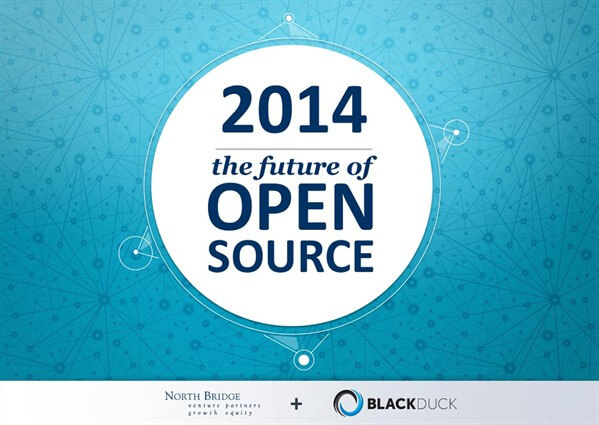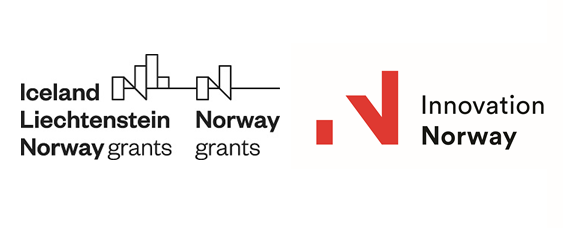Monthly Posts: April
FINkers United for Dummies continued
Where were we? Ah, we have clarified some general aspects like what is

FINkers United, what is its purpose, how can you become a member and so on and now it is time to explain what roles you can have in this community and how you can actually contribute.
Chapter 2: Structure and Roles
How can I contribute?
There are many ways you can contribute and thus become part of this living community. What you can do depends on your choice of involvement. The more dedicated you become, the more possibilities will open to you. Depending on your level of involvement, you can be a member, a contributor (individual or corporate) or a committer.
Can you detail the member part?
Anyone can become member of the community. You just have to be interested in what we are doing. You might very well be a user who downloaded and used our code and now just feel the need to give us your feedback. You might want to stay in touch with forum discussions, latest news and events or just burst with new ideas and suggestions.
Apart from that, members usually provide feedback on their experience using our outcomes, inform our developers of strengths and weaknesses they found and identify possible new features, support new users (share the experience they gained).
Note: When becoming a member you will be asked to agree to our code of conduct.
How about the contributors?
Community members who wish to take part in concrete ways in the community running may become contributors, and contributions can take many forms. There is no expectation of commitment to the project, no specific skill requirements and no actual selection process – all you have to do is to agree upon the terms and conditions of the CLA (Contribution License Agreement). Contributors engage with the project through forum, blog, Idea box, projects, and mailing lists.
When we talk of contributors though, we need to make the distinction between an individual contributor and a corporate contributor.
Individual contributors are the members willing to give away the outcomes of their activity within the community, no matter if they are a requirements designer, architect, developer, tester, document writer, or translator, you name it. Their artefacts will be submitted as patches and validated by committers or project maintainers, but their contributions will always be acknowledged.
Corporate contributors are those companies willing to empower their employees to become contributors within our community. This way they will always be in the middle of things and also have the possibility of influencing the paths the projects are going. All they have to do is to agree the terms and conditions of the CCLA (Corporate Contribution License Agreement) in order to avoid any copyright issues that may rise. This will come together with a list of employees the company agrees to have as contributors.
What can I, as a contributor, do more than a simple member?
There are several things a member cannot do, but a contributor can, such as: analysing and designing requirements, adding features, programming, fixing bugs, writing documentation, software localization, providing graphics and web design, etc.
You said something about a… committer, was it? What is that?
Generally, a potential committer is a contributor who has shown an understanding of the project, its objectives and its strategy and has provided valuable contributions to the project over a period of time. Consequently, the community will return his/her trust and (s)he may be nominated for committership by an already existing committer (initially, these are the project maintainers). Committers have no more authority over the project than contributors, as their work continues to be reviewed by the community before acceptance in an official release. The key difference between a committer and a contributor is when this approval is sought from the community: a committer seeks approval after the contribution is made, rather than before. Seeking approval after making a contribution is known as a commit-then-review process. The candidates for committership are voted within the project. Once the vote has been held, the aggregated voting results are published. Nominees may decline their appointment as a committer.
A committer who shows an above-average level of contribution to the project, particularly with respect to its strategic direction and long-term health, may be nominated to become project maintainer, and thus part of the Technical Committee.
Ah, so many new things you mentioned! If I understand correctly, I can be more than a committer in FINkers United?
Yeap, you can be a project maintainer. Project maintainers are contributors with leading role in managing the project assigned. Their role is to ensure the smooth running of the project by reviewing code contributions, participating in strategic planning, deciding upon matters for which the consensus cannot be reached, making sure that all governance processes are adhered to. The project maintainers have access to the project’s private sections and its archives (used for sensitive issues, such as votes for new committers and legal matters that cannot be discussed in public). Any new project maintainer is nominated by the existing project maintainers and is voted together with the project members. Technical committee may cast a veto. The project maintainers remain in role until they retire or the majority vote removes any of them.
You keep mentioning this voting process. What’s it about?
Issues such as those affecting the strategic direction or legal standing of the project must gain explicit approval in the form of a vote. Besides those there is also a not so dramatic voting request that will help us to prioritize projects, ideas to become new features, etc.
Every community member is expected to share his/her opinion on all matters and so they will simply cast votes. However, only the meritorious members will have a binding vote for the purpose of decision making (project maintainers, committers, Steering Committee members). This does not mean that you cannot make a difference, even if you are none of the above mentioned meritorious members, as a well justified vote may get supported by a binding vote.
A veto can be expressed only by binding votes. Any objection is to be addressed by the community until the objection is either revoked, overruled (in the case of non-binding votes) or the proposal is so altered as to achieve consensus. If no consensus is achieved, then Steering Committee may decide upon it.
I got it, but there is something I want to get back to. What is the technical committee?
The technical committee includes all the project maintainers. They are entitled to cast binding votes, can nominate committers and have a representative within the Steering Committee of the community. They may approve changes to the governance model and manage the copyrights within the project outputs and decide on matters that affect more projects.
Is it anything higher up the chain?
Yes, as I mentioned, there is the steering committee. The steering committee is a group of decision makers and has the role of the moderator: the instrumental inspirational authority, expected to draw both the development vision and the guidelines of the community.
I know it’s a lot of information at one time, but it will become even clearer when we explain in our next chapters how everything actually works in the community, what are the standard processes and so on.
Future of Open Source
by Mihai Guiman

The annual Future of Open Source Survey, which provides a report on the state of the open source industry and analysis of future trends, reached its 8th edition. This year the survey confirmed that the open source movement is getting more and more attention, having received over 1200 responses and support from over 30 open source industry icons, with a rich conversation thread on twitter – #FutureOSS. The results were presented in a panel discussion that commented on the latest trends in open source, and evolution from the previous years. If you missed the webinar you can access the recording here and the survey results are available on SlideShare here.
Besides the record numbers in attendance, it’s worth mentioning that this year more consumers of open source have participated to the survey than vendors, underlining that users are becoming more participative and are starting to contribute back.
Abstract
According to Blackduck, this year’s survey results build upon the democratization and proliferation of open source in three main areas:
- New People – Survey results uncover the growth of first-time developers participating in the open source community
- New Technologies – the rate of innovation is spurring new technologies such as the Internet of Things (IoT) and the continued rise of Software as a Service (SaaS). When asked what industries open source technology was leading, 63 percent cited cloud computing/virtualization, 57 percent answered content management, 52 percent selected mobile technology, and 51 percent answered security.
- New Economics – A change in the way enterprises view open source was signaled by 56 percent of respondents expecting corporations to contribute to more open source projects in 2014. When asked why corporations engaged with OSS communities, cost reduction remanded the top response (61 percent), but gaining competitive advantage came in second (45 percent), and for companies over 1,000 employees, influencing a project’s direction was the third most popular answer.
Highlights
One major shift from the previous years is that the number one factor in adopting open source is based on the quality of software (8 out of 10). This is thought to be a direct result of more people becoming contributors to open source projects, which leads to creating and maintaining high quality software.
Another major shift is that security in open source is considered to be a strength, even though a couple of years ago security was viewed as a liability. I couldn’t agree more, as I’ve followed the heated debate between security in open source versus proprietary software and shared my thoughts.
80% of the respondents consider that competitive features/technical capabilities of open source software are another adoption decision factor.
An interesting point made by one of the panelists is that only open source crypto currencies have been successful so far because it’s the only way one can see transparently what kind of code is being used, also a new trend for financial applications.
The senior open source strategist from Samsung states that they both use open source technology in their products and contribute to open source. This way they are making sure they can to influence the development track of the projects. In his view, in order to be successful and have a competitive advantage when consuming open source you have to collaborate with others to build projects you can rely on. Helping the project grow will benefit you because it gives the possibility to free up engineering resources to work on things that are strategic rather than work on things which are commodity.
Allevo, FINkers United and FinTP
I have shared in a previous article how Allevo, a private ISV and consultancy company focused on delivering software products for financial institutions, decided to share our achievements and knowledge by publishing our application for processing financial transactions (FinTP) under an open source license. Of course, in order to ensure the project’s success we have started to build a community of professionals around the application that share the same interests. We called it FINkers United.
Given these trends of the open source industry, I believe Allevo’s approach with the FinTP project serves best the financial services market. The processing of financial transactions has become a commodity, so non-differentiating software should take advantage of what the open source culture is all about: sharing and collaboration throughout the software lifecycle in order to achieve high security and quality of software, control and flexibility, lower cost and improved efficiency.









